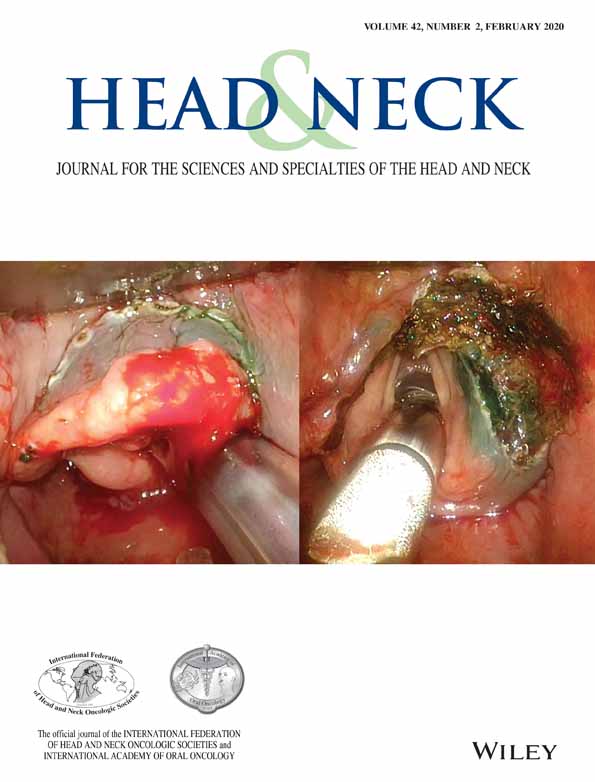Safety and efficacy of transoral robotic and endoscopic thyroidectomy: The first 100 cases
Abstract
Background
The aim of this study was to evaluate the safety and efficacy of transoral robotic and endoscopic thyroidectomy.
Methods
We analyzed and compared the first 100 cases of transoral robotic (71 cases) and endoscopic (29 cases) thyroidectomy with 207 cases of conventional transcervical thyroidectomy.
Results
Transoral thyroidectomy was completed successfully in all patients, except for three who were converted to the robotic facelift or transcervical approach. The mean operative time of the transoral procedure was significantly longer than that of the conventional procedure. Perioperative complications such as hypoparathyroidism, vocal cord palsy, hematoma, and seroma did not differ between the two groups. However, there were some unusual complications such as CO2 embolism, surgical site infection, skin trauma, burn, and ecchymosis in transoral thyroidectomy. Postoperative cosmesis was significantly better in the transoral group.
Conclusion
Transoral robotic and endoscopic thyroidectomy is feasible and comparable to conventional transcervical thyroidectomy in highly selected patients.
CONFLICT OF INTEREST
The authors declare no potential conflict of interest.




